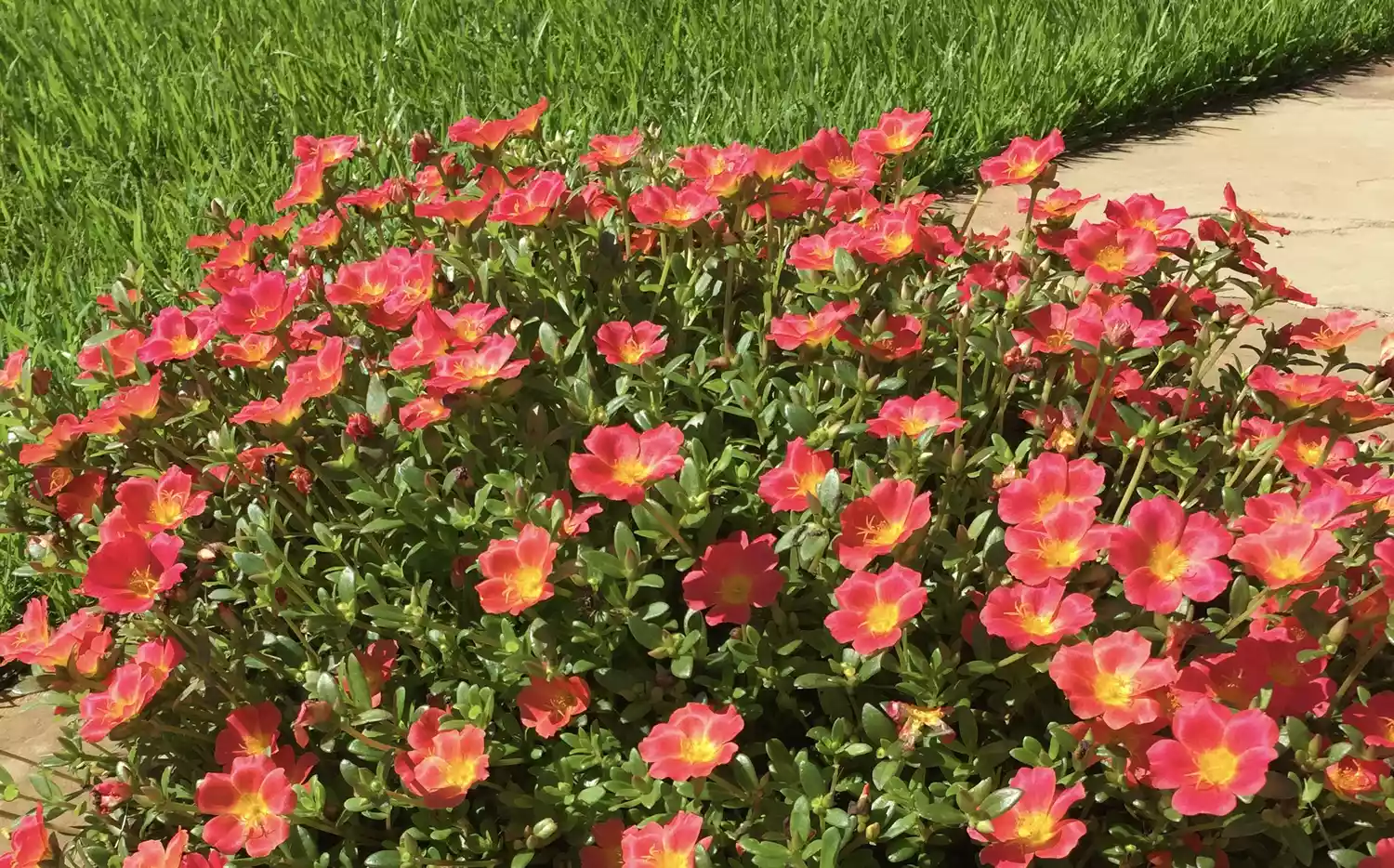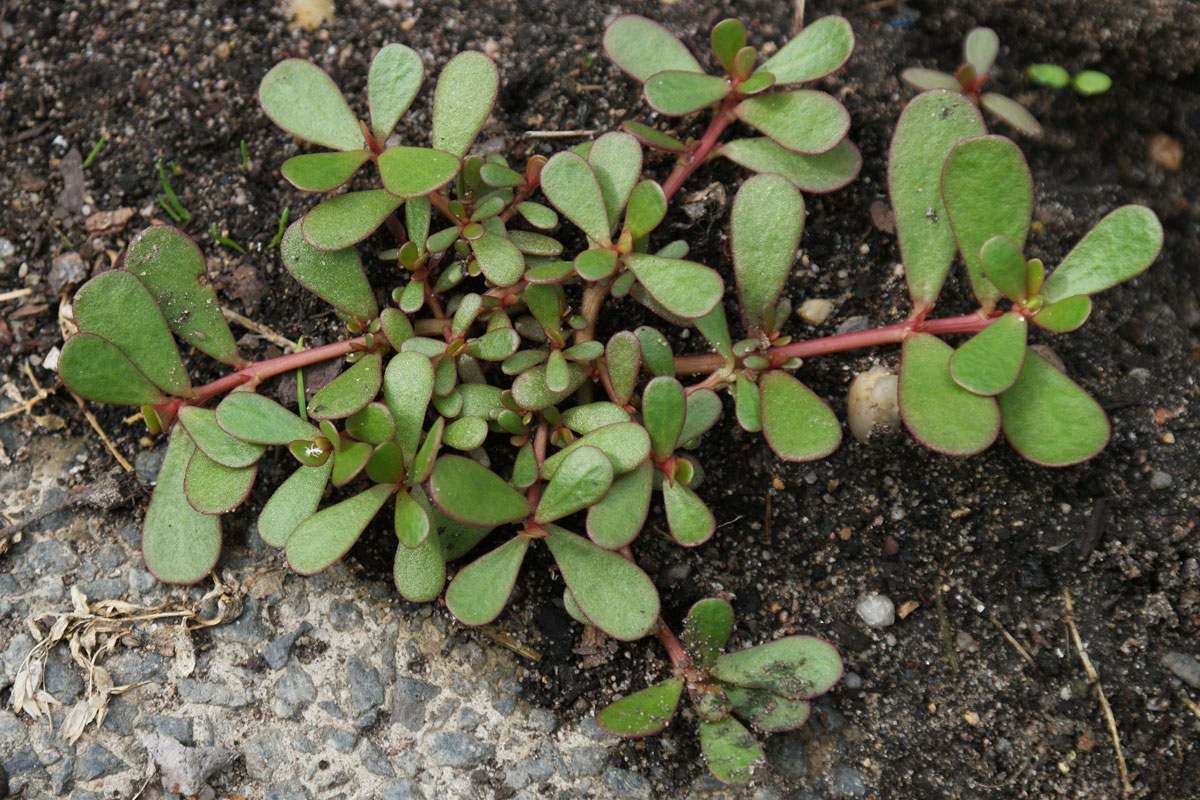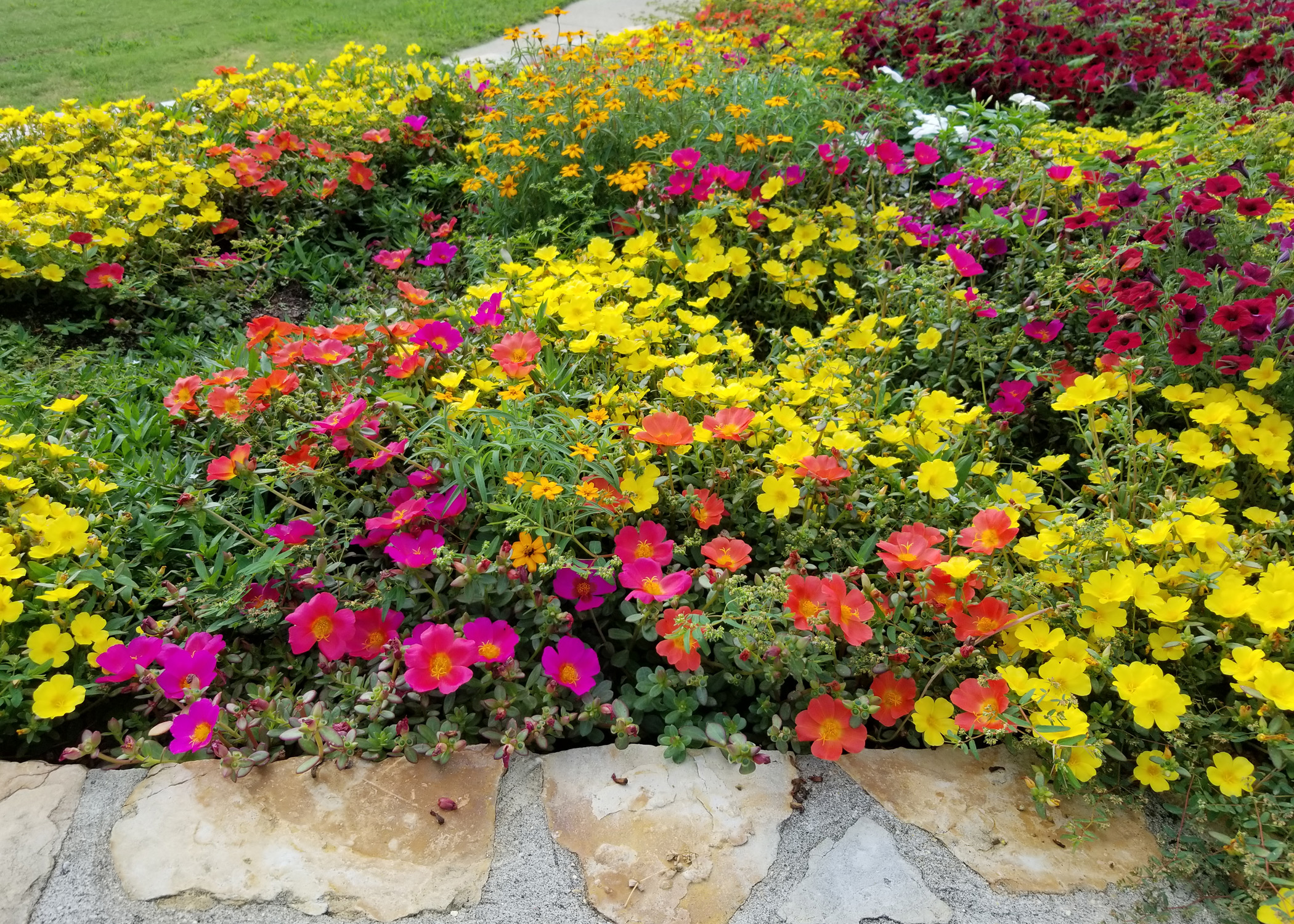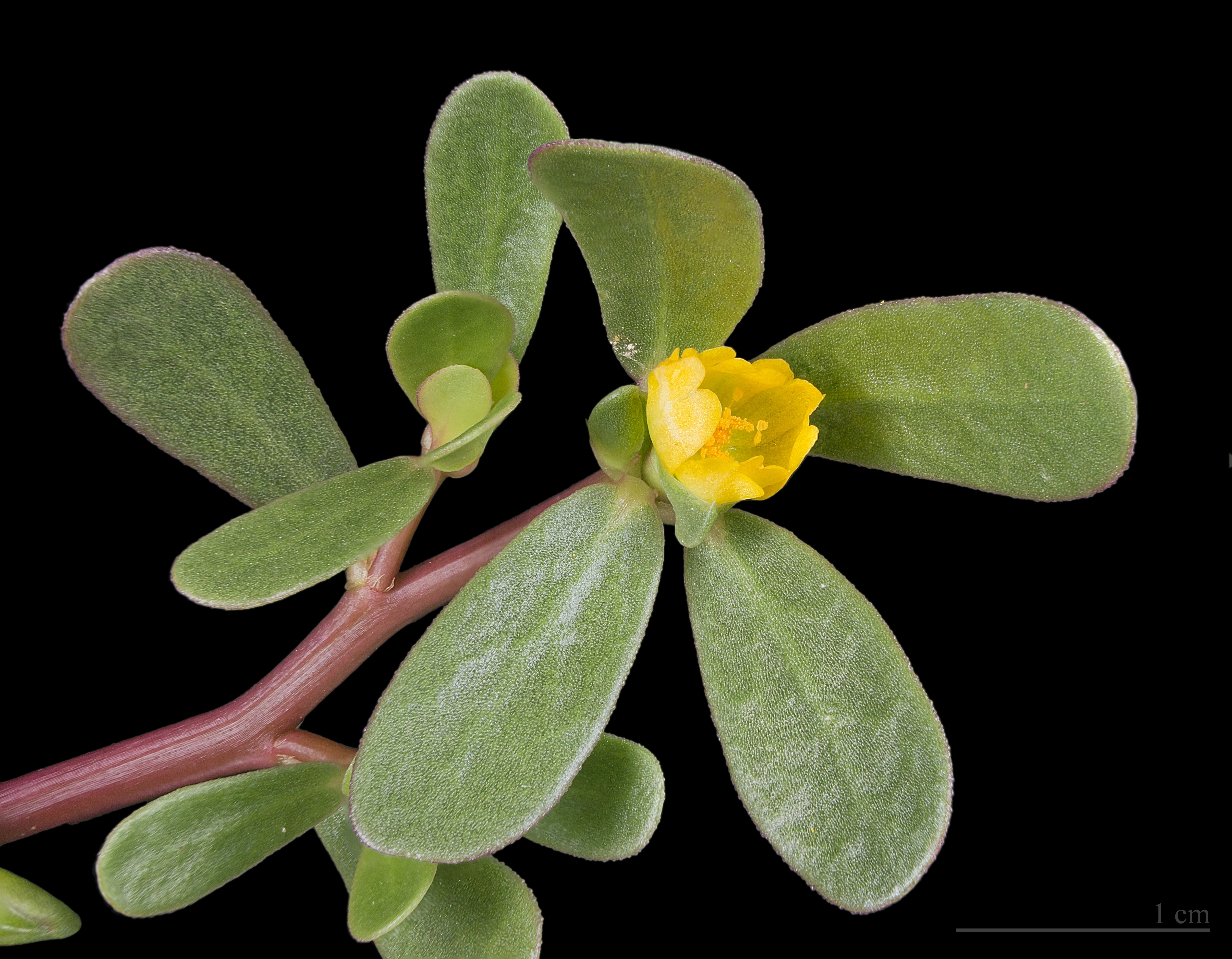
With blooms that mimic sprinkled confetti, Portulaca puts on a garden celebration all summer long. Portulaca grandiflora, which, in Latin means ‘large-flowered,’ adds a profusion of brilliant blooms to any garden.1
The flowers of Portulaca close at night and reopen the next morning. Its lush succulent leaves and vibrant colors evoke a sense of the tropics. Bees, butterflies, and hummingbirds are attracted to its showy flowers. This low-maintenance xeric plant thrives in even the hottest, driest summers. Stunning in a row of hanging baskets on the porch or spilling over a rock wall or a path, you can plant it and almost forget it thanks to its low water needs. Add this to your landscape and it will be teeming with repeat blooms from spring through fall.
Plant Attributes
| Common Name | Moss Rose, Sun Rose |
| Botanical Name | Portulaca grandiflora |
| Family | Portulcaceae |
| Plant Type | Annual |
| Mature Size | 6 to 8 in. tall and 12 to 24 in. wide |
| Sun Exposure | Full sun |
| Soil Type | Sandy or rocky well-draining soil |
| Soil | Slightly acidic |
| Bloom Time | Summer to first freeze |
| Flower Color | white, yellow, orange, coral, fuchsia, pink, red, mixed |
| Hardiness Zones | 2-11 (USDA) |
| Native Area | South America |
Care
Carefree Portulaca makes an excellent ground covers or hanging basket. With up to a two-foot trailing spread of blooms, the tender foliage adds excellent interest to walls and rocks. Happy to grow out of little cracks, you can tuck a few stems into fossil rock.
Light
Portulaca thrives in full sun. Given at least 6 to 8 hours of sun, it will bloom prolifically from spring through fall.
Soil
Perky Portulaca will tolerate a variety of soils; however, good drainage is key to happy plants. In containers, use a well-draining potting mix. In the landscape, amend soil with a little sand or compost to improve drainage.
Water
With shallow roots and moisture-retaining leaves, it is exceptionally drought-tolerant and only requires watering when top layer of soil has dried out.

Temperature and Humidity
Summer-loving Portulaca can withstand high heat and dry weather conditions.
Fertilize
Minimal fertilizer is needed for Portulaca, as it typically withstands neglect. An all-purpose fertilizer can be applied mid-summer to encourage new growth.
Types of Portulaca
Moss Rose
This whimsical variety sports frilly ruffled blooms and an almost fern-like contrasting foliage. Often available in pots planted with multiple colors, including red, orange, coral, yellow, white, and pink.
Fairytales Cinderella
This striking portulaca features vibrantly contrasting yellow and fuchsia flowers. It sports a unique pom pom-like bloom center and grows 4 to 8 in. tall and 14 to 16 in. wide.
Mojave Tangerine
Dazzling flowers the color of orange creamsicle dot this compact variety that trails up to 16 inches long. This award-winning variety makes a great addition to hanging baskets and window boxes.
Sundance
A popular variety, these neon-hot pink blooms draw attention to themselves anywhere they are placed. With particularly large blooms, Sundance grows in an upright and spreading form up to 12 inches tall.
Happy Trails Yellow
This compact variety of moss rose has bright yellow semi-double, cup-shaped blooms on oblong, pointed leaves.
Pruning
No pruning is required for Portulaca to grow and bloom profusely. However, if you want to shape or contain the plant, you can prune as much as you like. While spent blooms fall off, you can easily pinch them back to encourage new ones or to prevent them from spreading seed.
Propagating
Cuttings of 2 to 3 inches can be planted to propagate new plants. Remove any spent blooms or buds. Dip the cut end into rooting hormone and place into moist soil. Water enough to keep the soil consistently moist but not waterlogged until the plant has rooted. Once new growth is visible, cut back to regular watering.

How to Grow from Seed
Outdoors, seeds can be started in the landscape after the last frost. Press into moist soil and keep lightly moist until growth is visible. Sow seeds inside in a sterile seed-starting mix inside 6 -8 weeks before the last frost. Moisten the soil and press gently into the soil. Seeds do not need to be covered with soil. Keep moist and place where seedlings will get bright light. After the danger of frost has passed, transplant it into a larger container or directly into the garden.
Overwintering
Portulaca are annuals, growing, flowering and setting seed in only one growing season. They are not overwintered; simply plant new ones the following spring.
Common Pests and Diseases
There are no pests or diseases specifically known to trouble Portulaca. In poor conditions, the plant can be subject to common pests like thrips, aphids, mealybugs, or spider mites. You can spray water on the plant to dislodge pests or spray with insecticidal soap.
Overwatering or poorly drained soil can lead to root rot, powdery mildew, or a gray mold called botrytis. Portulaca is susceptible to these or other fungal issues if conditions are too moist or they are planted in areas with poor air circulation. Diseased sections should be removed and disposed of. Water early in the day to allow soil to dry out before cooler evening temperatures.
Common Problems
There are no known issues specific to Portulaca. In hot summers, be aware that small animals like birds, squirrels or chipmunks may seek out Portulaca to eat because it retains water in its leaves. It is toxic to dogs, cats, and horses and can lead to kidney failure and death.







